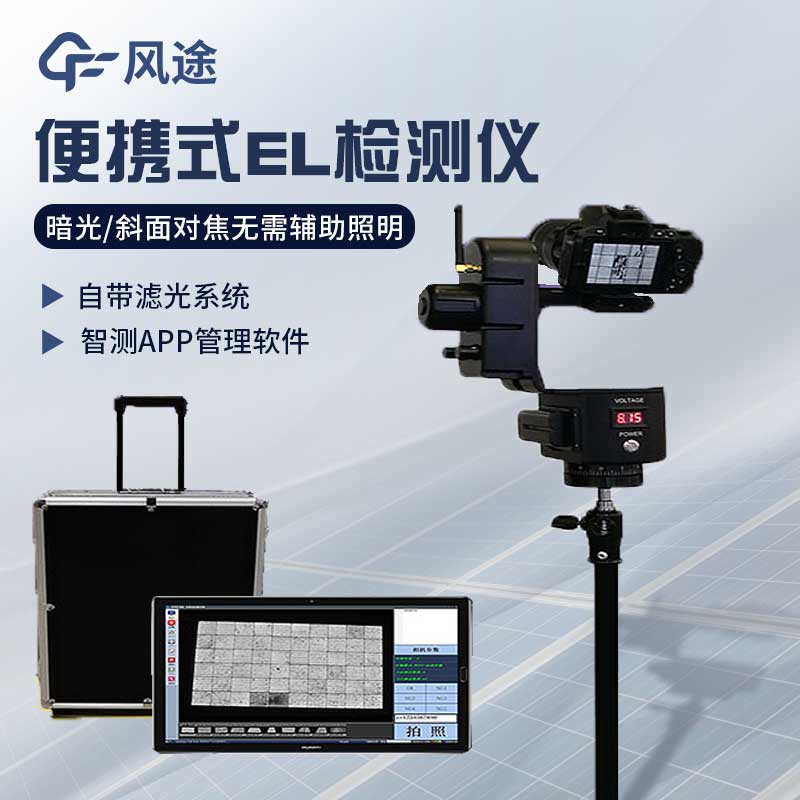Tianqiong Sensor IOT Technology Co., Ltd
Sales Manager:Ms. Emily Wang
Cel,Whatsapp,Wechat:+86 15898932201
Email:info@fengtutec.com
Add:No. 155 Optoelectronic Industry Accelerator, Gaoxin District, Weifang, Shandong, China

Sales Manager:Ms. Emily Wang
Cel,Whatsapp,Wechat:+86 15898932201
Email:info@fengtutec.com
Add:No. 155 Optoelectronic Industry Accelerator, Gaoxin District, Weifang, Shandong, China
time:2025-06-09 09:14:41 source:Weather Station viewed:258 time
There is a hidden hazard invisible to the naked eye in solar photovoltaic panels —— hidden cracks. This hazard can negatively impact the performance and lifespan of photovoltaic power generation systems. Let’s take a detailed look at it.
Hidden cracks refer to fine cracks that occur in the cells of solar modules after encapsulation. These cracks are extremely tiny and cannot be directly observed by the naked eye, yet they possess great destructive power. Over time, under mechanical vibration or load, hidden cracks will continue to expand, eventually leading to open-circuit damage in photovoltaic modules. This significantly reduces the power generation efficiency, reliability, and service life of the modules, and may even threaten the stable operation of the entire photovoltaic system.
The formation of hidden cracks is the result of multiple factors acting together, with uneven stress on the module being the main factor. During the transportation of photovoltaic modules, vibrations caused by vehicle jolting and loading/unloading collisions may damage the cells inside the modules. However, there is no need to worry excessively during the component production phase. The complete production process includes multiple procedures such as cell sorting, string welding, lamination, layering, cleaning, and component testing. EL (electroluminescence) testing is conducted both before and after lamination. Once hidden cracks are detected, problematic components are promptly repaired or replaced, so the risk of hidden cracks during the production stage is basically controllable.
What requires special vigilance is the non-standard operation during component transportation and installation. According to statistics, most hidden cracks originate from this stage. For example, uneven force during handling or over-tightening screws during installation can cause the cells to bear unnecessary pressure and generate hidden cracks. Different types of hidden cracks cause varying degrees of harm. Mesh cracks and cross cracks have a greater impact on module performance. Severe hidden cracks can also trigger the hot spot effect, i.e., abnormal local temperature rise, which not only reduces power generation efficiency but may also cause safety hazards such as fires.
Of course, there are solutions to address hidden cracks. Professional photovoltaic panel hidden crack rapid detection instruments can accurately detect hidden cracks that are difficult to perceive with the naked eye. For components with hidden cracks, repairs or replacements can be carried out according to actual conditions to reduce losses. Naturally, standardizing component transportation and installation operations, as well as conducting daily inspections and maintenance, can effectively prevent the occurrence of hidden cracks.
The Photovoltaic Panel Hidden Crack Rapid Detection Instrument FT-EL3 is a professional device equipped with a 24.76-megapixel high-sensitivity infrared camera, a 23.5x15.6mm CMOS sensor paired with an 18mm wide-angle infrared lens. It provides clear image resolution with a precision of 0.5–0.0mm/pixel, capable of presenting clear hidden crack imaging under a weak current of 3A. With a large detection area, it can accurately identify defects such as hidden cracks and broken pieces.
It can complete synchronous imaging of multiple components, ensuring high detection efficiency. It is suitable for component quality inspection in scenarios such as incoming inspection of photovoltaic power plant components, post-installation testing, and warehouse inspections. The device’s full-time low-light auto-focus module enables rapid and accurate focusing to obtain clear and stable images even in low-light environments such as nighttime, with minimal interference from various light sources during testing. With networked wireless control, inspectors can remotely control the device and view/download data in real time. The program-controlled constant-current power supply allows for long-term uninterrupted on-site testing, and the delayed power-off function enhances convenience. The 10AH high-performance lithium battery power module, with an output current of 8A and voltage of 70V, covers a wide load power range, supporting the detection of a large number of photovoltaic panels. It also has multiple protection functions such as short-circuit and overheating protection, effectively ensuring the safety of the device and personnel.
In summary, although hidden cracks are difficult to detect directly, as long as we have sufficient understanding and attach importance to them, we can ensure the normal operation of solar components and enable green energy to play a more stable and lasting role.

Negative oxygen ions exert a significant impact on the physiological activities of the human body, and their effects are mainly realized through the nervous system and blood circulation process. For this reason, the concentration of negative oxygen ions in the air has become one of the key indicator...
In the water conservancy and water services industry, water regime monitoring is a fundamental task. Especially during summer when natural disasters occur frequently, monitoring enables disaster prediction and provides data support for formulating flood prevention and relief plans. With the applicat...
The Atmospheric Environment Monitoring System serves as a monitoring unit in grid-based monitoring systems. It adopts a miniaturized design enabled by sensor technology, capable of flexibly detecting one or more of various pollutant parameters, including PM10, PM2.5, SO2, NO2, CO, O3, and TVOC. This...
The Snow Level Sensor is a high-precision, high-reliability environmental monitoring device based on ultrasonic distance measurement principles, specifically designed for automated and continuous measurement of snow depth.Its working mechanism is based on the "time difference method" in ph...